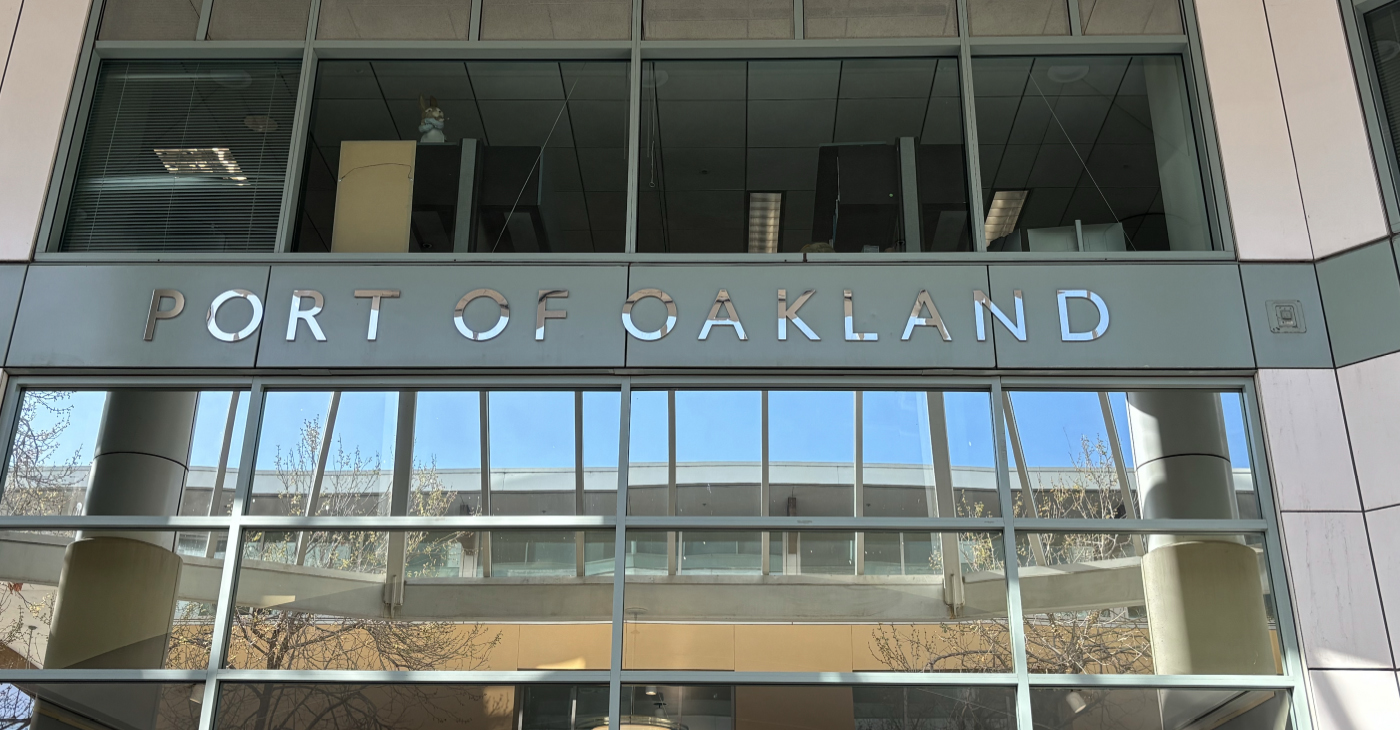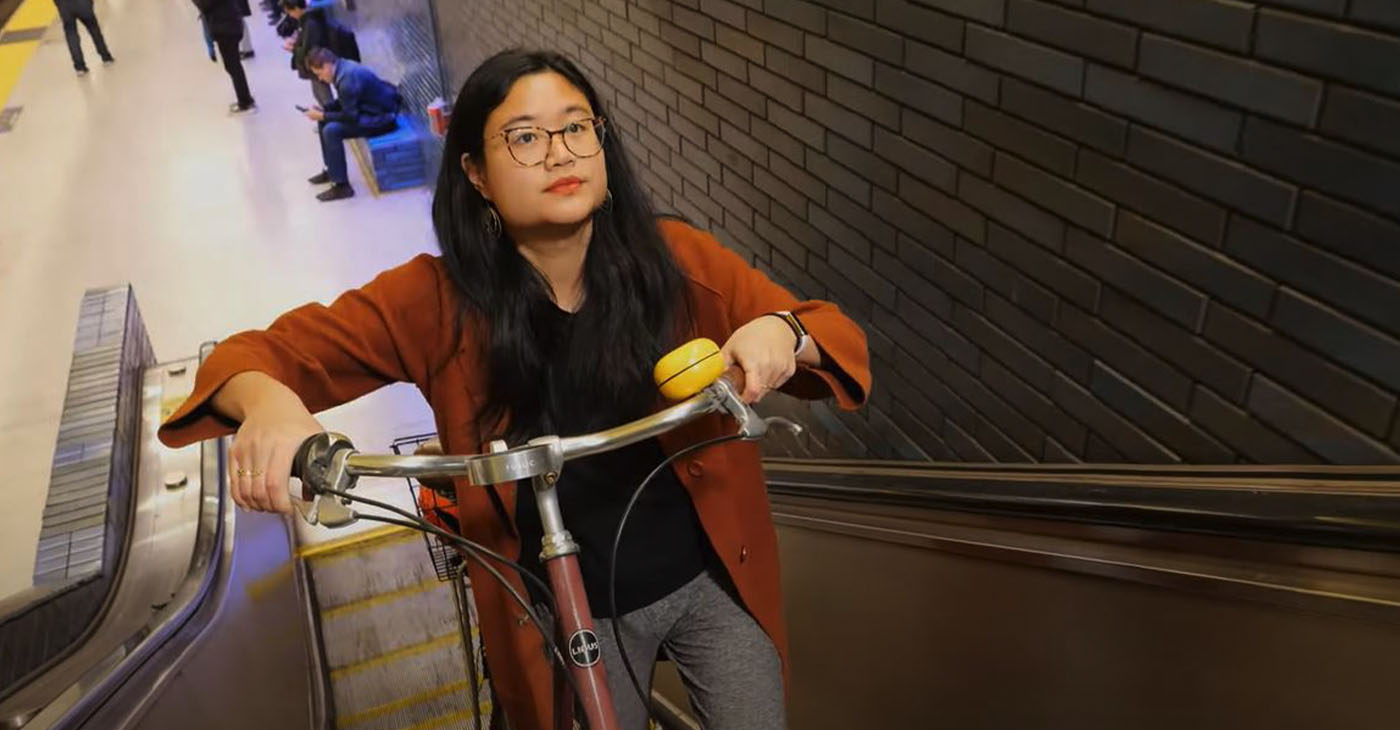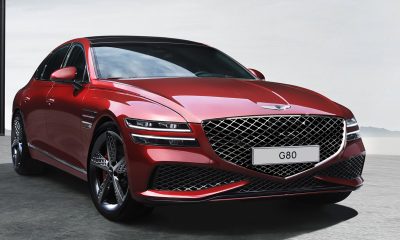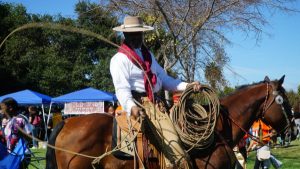Transportation
Car Review: 2015 Hyundai Genesis AWD 3.8
By Frank S. Washington
NNPA Columnist
DETROIT (NNPA) – From the moment we got in the 2015 Hyundai Genesis, our thought was Hyundai has found how to bake in that intangible that says luxury. It wasn’t in the sedan’s equipment or the engine; it was the ambience or the air of luxury inside the car.
You can call something a luxury car, but if the interior doesn’t feel or look like a luxury car, then you have a tough sell ahead. The first thing we noticed about the Genesis interior was the wood. There was a broad swath of matte-finished wood across the face of the dash and it had a natural grain look and feel. It continued through the doors fore and aft.
There was a TFT screen between a three dimensional odometer and speedometer. The touch screen was pretty wide but not so big as to overpower the wood finish. Inside trim included aluminum, chrome and upscale polymers.
And the car was quiet, really quiet – with the engine on or engine off. We had the Genesis 3.8. AWD. That means our test car had a 3.8-liter direct injection V6 that made 311 horsepower and 293 pound-feet of torque. It was mated to an eight-speed transmission. This powertrain was smooth, quiet and assertive.
The 2015 Hyundai Genesis is available with either rear-wheel-drive or all-wheel-drive HTRAC. Our test vehicle had all-wheel-drive. The system distributed torque to the wheels according to the drive modes: Eco, Normal, Sport and Snow. Even on dry pavement it will send more torque to the rear wheels.
Hyundai said, “This system has a wider range of torque distribution variability than many competitive systems and has been tuned to variable conditions such as straight-line acceleration, medium- and high-speed cornering, and hill-starts.”
Putting power to all four wheels is great for slippery roads. But it also contributes to effective handling on dry pavement. And the 2015 Hyundai Genesis stuck to the pavement. Turns were sharp, cornering was crisp and the car accelerated with authority, once reaching 95 mph from 75 mph in roughly two seconds.
High strength steel was used extensively on the platform of the new Genesis. The result was 16 percent stiffer torsional rigidity and 40 percent stiffer bending rigidity compared to the first Genesis. That may sound too technical. but the bottom line is it was a smoother ride with hardly any noise, vibration or harshness.
We went over a stretch of road, Outer Drive between Wyoming and Livernois, which was ruddy surfaced and pock marked from one street to the other. There were no squeaks or rattles, the 2015 Genesis was quiet, even the thumps and bumps of the suspension were muffled.
Hyundai said the Genesis is the first model to use the company’s Fluidic Sculpture 2.0, yes there was a 1.0. The swerves and curves of the first generation have been reduced. Thus, the design can be incorporated into more Hyundai models. The Korean automaker needs to find a familial exterior style for its vehicles.
The Genesis had a distinctive hexagonal grille and a crease accent line running along the flanks of the car. It had a long snout and short rump with a longer wheelbase and shorter overhangs than the car that it replaced. This car looked like it could run – fast.
Our test vehicle was loaded. It had a 12-way front power seat. The driver’s chair had power bolsters and a seat cushion extension. The front seats were heated and cooled while the rear seats were heated. Our beige perforated leather seats had black piping.
Those rear seats were spacious, there was plenty of legroom and headroom was great. The 2015 Genesis has more interior room than its competitors, so said Hyundai.
But from those back seats we got a good look at our only quibble with the Genesis. Buttons, lots of buttons. We counted some two dozen on the front control center. That’s a lot of buttons for a car with a mouse and a touch screen.
Don’t get it twisted; the controls were not confusing in the least. However, with proximity technology, infrared and other sensing mechanisms, luxury automakers are, read Hyundai competitors, moving to clean interior looks that involve hardly any buttons or switches.
The test car had a panoramic roof, manual shades on the rear side windows and of course a power shade on the rear window. There was a backup camera with cross traffic alert and parking guidelines. The system would even project a vertical look of the car’s rear.
It had a navigation system, satellite radio, voice controls, auxiliary and USB jacks, blind spot alert and land departure warning. The technology package included partial automatic emergency braking from 50 mph to 112 mph and full automatic braking from 5 mph to 50 mph.
A Hyundai Blue Link app for your smartphone will let you remotely start the car, lock or unlock the doors, do point of interest searches using the navigation system, search for gas stations, call roadside assistance talk to a Blue Link agent and locate nearby dealers.
And the 17 speaker, 900 watt infotainment system let you voice control the navigation system, the audio system, including Pandora and Sound Hound, search for fuel prices, get movie tickets and check the weather.
That was just some of the 2015 Hyundai Genesis’ equipment. The sticker on our test car was $52,450. Quite frankly, we thought it was underpriced.
Frank S. Washington is editor of AboutThatCar.com.
###
Bay Area
Port of Oakland Commission Votes to Change Oakland Airport to ‘San Francisco Bay Oakland International Airport’
The Port of Oakland Commission voted unanimously to change the name of Metropolitan Oakland International Airport to San Francisco Bay Oakland International Airport at a commission meeting Thursday afternoon. The Port initially announced the name change on March 29, claiming that the change will attract more passengers and enhance the airport’s visibility. They contend that the airport often gets neglected by the public’s lack of knowledge of Oakland’s proximity to San Francisco.

By Magaly Muñoz
The Port of Oakland Commission voted unanimously to change the name of Metropolitan Oakland International Airport to San Francisco Bay Oakland International Airport at a commission meeting Thursday afternoon.
The Port initially announced the name change on March 29, claiming that the change will attract more passengers and enhance the airport’s visibility. They contend that the airport often gets neglected by the public’s lack of knowledge of Oakland’s proximity to San Francisco.
“We want people to know where Oakland is and how beautiful our city is. We want them to visit, we want them to spend their money, and we want to keep our money into our local economy,” Port Commission President Barbara Leslie said at the meeting.
The commissioners shared anecdotal experiences and research to explain how this new name change will elevate and add to the growth of Oakland, not take away from their Bay Area neighbors.
The Port claimed that local residents had been asking for more options in domestic and international flights, but in order to do that, outside travelers need to be aware of Oakland’s presence first.
Since the announcement of the new name, San Francisco leaders strongly opposed the suggestion for a change, the City Attorney going as far as threatening legal action.
SF City Attorney David Chiu announced Monday that his team sent a letter to the Port of Oakland, writing that if Oakland goes forward with the name change, the city will go forward with a lawsuit to prevent the use of their trademarked name.
San Francisco owns U.S. federal trademark registrations for the marks “San Francisco International Airport”, the letter says.
Chiu further claimed that the name change will only cause confusion and chaos for travelers who are used to seeing the San Francisco name in the SFO trademark.
“We want to see the entire Bay Area thrive as a tourist destination and expand our offerings to visitors, but this proposal is not a legal or practical way to go about it. If Oakland moves forward with this proposal, San Francisco will pursue legal action to prevent misuse of our trademark,” Chiu said.
SF Mayor London Breed joined Chiu’s letter, stating that Oakland does not need to add the internationally popular city to its brand in order to grow its services.
“[Oakland] is rich in culture and wonderful people and has its own unique identity. It does not need the name San Francisco as part of its airport to stand out,” Breed wrote.
The Port defended its proposed actions, saying that if the vote did go forward, they would “take all appropriate measures to defend its right to use this accurate geographic identifier.”
“The proposed name modification will clarify, not confuse. The new name identifies where OAK is actually located, which is on the San Francisco Bay,” a spokesperson said on behalf of the Port.
Support for the name change extends beyond the Port. Several regional leaders, airlines and community members have come out in support of the name change, including Oakland Mayor Sheng Thao.
“This adjustment isn’t just about signage—it’s about inviting travelers to discover all that Oakland and the region have to offer. From our local dining scene to unique shopping spots and cozy hotels, there’s something here for everyone. Let’s work together to ensure that Oakland Airport continues to serve as a welcoming gateway for visitors and a source of pride for our community,” Thao said.
Because of public outcry amongst residents and leaders in Oakland and San Francisco before and during the Commission meeting, the Board decided to extend the second reading for the proposed name change from the end of April to the first meeting in May. This decision will allow commissioners to connect with community groups and leaders over their concerns for the change.
The Port Commission is scheduled to hold a second reading of the proposed name change on May 9.
Bay Area
Oakland Finishes Final Draft of Downtown Specific Plan for Potential City Improvements
In late March, Oakland’s city administration announced the final draft of their Downtown Specific Plan, a blueprint for city improvements and developments over the next 20 years. The comprehensive 474-page plan lays out policies for downtown developments that will increase economic, social and cultural, and communal opportunities for residents and workers who frequent this essential hub in Oakland.

By Magaly Muñoz
In late March, Oakland’s city administration announced the final draft of their Downtown Specific Plan, a blueprint for city improvements and developments over the next 20 years.
The comprehensive 474-page plan lays out policies for downtown developments that will increase economic, social and cultural, and communal opportunities for residents and workers who frequent this essential hub in Oakland.
Several departments over the course of eight years developed the plan, with two phases that emphasized a need for community input from local stakeholders, such as leaders and residents, and a focus on the role of social and racial equity in past and future developments.
Throughout the extensive plan, the concept of equity for marginalized communities is embedded with each goal and priority for the improvements to downtown. It acknowledges that social and racial barriers are preventing these communities from thriving on an equal playing field.
The authors identified six key disparities, or ‘equity indicators’, that set the baseline for how success will be measured for the improvements. These indicators include the burden of housing costs, homelessness, displacement, disconnected youth, unemployment rate and median income.
The plan is also broken up into chapters, each describing a major issue or topic that is plaguing downtown residents and workers, such as mobility, culture preservation, community health and sustainability, and land use and urban design.
Within each chapter, the authors dedicate a section to the impacts of the COVID-19 pandemic for the various areas of interest, illustrating how disparities and inequities increased before and after the disease’s peak.
Two major issues highlighted in the plan are economic opportunity and housing and homelessness. Both of these issues have been aggravated by the pandemic and require substantial support and resources to move forward.
Many reports coming out of the commercial and residential districts downtown have blamed the rise in crime and cost of living as reasons for leaving Oakland for other cities or closing down indefinitely.
The plan attributes rising rents of both residential and commercial properties to the displacement of local businesses and entrepreneurs. Downtown also has an imbalance in the jobs to housing ratio, which limits access to jobs as commuting distances increase.
Other concerns for the local economy are barriers to employment opportunities for workers of color, non-English speakers, and those with limited access to transportation. As stated in the plan, downtown also has a lack of vacancies near public transit hubs, such as BART, bus stops or ferry terminals, which could save workers money and time for their commutes into the city.
According to the downtown plan, the average unemployment rate for the white population was 5.9%, but the Asian population was at 6.7%, and for the Black population it was even higher at 10.4%.
The proposed solutions for the lack of economic prosperity include providing assistance to local businesses owned by people of color, reinforcing downtown as the ‘place to be’ for nightlife entertainment, and building businesses closer to public transit.
The addition of over 18.3 million (m) sq. ft. of new commercial space, 1.3m sq. ft. of new institutional space, and 500,000 sq. ft. of new industrial space, could potentially create almost 57,000 jobs downtown.
Housing and homelessness, issues closely tied to economic prosperity, are top concerns for Oakland residents. High rents have led to displacement and homelessness for those unable to keep up with the rising costs of the Bay Area.
Over 5,000 people are currently experiencing homelessness in Oakland, according to 2022 Point In Time data. 60% of this population is Black despite only making up nearly 20% of the total city population.
The plan explains that by adding nearly 29,000 new homes and expanding affordable housing units across the city by 2040, this would help alleviate the stress of obtaining and affording a home.
Strategies proposed to tackle the housing and homelessness crisis include increasing renter protections, providing additional shelters and services for homeless residents, and promoting homeownership in downtown with first-time buyer assistance and proactive assistance to vulnerable homeowners.
The plan acknowledges that the implementation of changes and developments amongst the several concerns outlined in the document will take time, both in short and long term periods.
To better explain how and when each project will be addressed over the course of the next two decades, a detailed 123-page graph shows which agencies, potential funding sources, and costs come with the goals.
The Oakland Planning Commission and Landmarks Preservation Advisory Board will each hold public hearings regarding the final draft of the Downtown Plan in May and June.
Bay Area
Bikes Now Allowed on BART Escalators
As of Jan. 1, bikes are allowed on most of the escalators throughout BART, a new rule change that aims to make it easier for cyclists to board trains. Bikes will only remain banned from BART’s 10 narrow escalators located at the 19th Street Oakland, Antioch and Oakland Airport Connector stations, according to the transit agency.

The Richmond Standard
As of Jan. 1, bikes are allowed on most of the escalators throughout BART, a new rule change that aims to make it easier for cyclists to board trains.
Bikes will only remain banned from BART’s 10 narrow escalators located at the 19th Street Oakland, Antioch and Oakland Airport Connector stations, according to the transit agency.
BART is also now allowing bikes on all train cars except for the first car. Bikes were previously banned from the first three cars during commute times.
Ten years ago, BART ended a ban on bikes on the transit system during the commute hours. Over the last decade, the transit agency noted the growing popularity of larger, heavier bicycles.
“Carrying bikes up and down stairwells can be difficult and not all bikes fit in our elevators,” said BART Director Rebecca Saltzman. “Updating our rules will make BART easier to use for cyclists and families bringing bikes on the train. Bikes play an important role in getting people out of their cars and on public transit and these updated rules encourage environmentally friendly multimodal travel options.”
BART encouraged riders to use their best judgment when using escalators. The transit agency released a new video detailing safety tips for bringing bikes on escalators in the system.
BART offers this Elevator Dimension Guide to provide cyclists with dimensions of each elevator in the system, including measurements of the door, width, length, and diagonal space across the floor.
-

 Activism4 weeks ago
Activism4 weeks agoOakland Post: Week of March 27 – April 2, 2024
-

 #NNPA BlackPress4 weeks ago
#NNPA BlackPress4 weeks agoBeloved Actor and Activist Louis Cameron Gossett Jr. Dies at 87
-

 Community1 week ago
Community1 week agoFinancial Assistance Bill for Descendants of Enslaved Persons to Help Them Purchase, Own, or Maintain a Home
-

 Activism3 weeks ago
Activism3 weeks agoOakland Post: Week of April 3 – 6, 2024
-

 Business1 week ago
Business1 week agoV.P. Kamala Harris: Americans With Criminal Records Will Soon Be Eligible for SBA Loans
-

 Activism2 weeks ago
Activism2 weeks agoOakland Post: Week of April 10 – 16, 2024
-

 Community1 week ago
Community1 week agoAG Bonta Says Oakland School Leaders Should Comply with State Laws to Avoid ‘Disparate Harm’ When Closing or Merging Schools
-

 Community6 days ago
Community6 days agoOakland WNBA Player to be Inducted Into Hall of Fame
Transportation
Car Review: 2015 Hyundai Genesis AWD 3.8
By Frank S. Washington
NNPA Columnist
DETROIT (NNPA) – From the moment we got in the 2015 Hyundai Genesis, our thought was Hyundai has found how to bake in that intangible that says luxury. It wasn’t in the sedan’s equipment or the engine; it was the ambience or the air of luxury inside the car.
You can call something a luxury car, but if the interior doesn’t feel or look like a luxury car, then you have a tough sell ahead. The first thing we noticed about the Genesis interior was the wood. There was a broad swath of matte-finished wood across the face of the dash and it had a natural grain look and feel. It continued through the doors fore and aft.
There was a TFT screen between a three dimensional odometer and speedometer. The touch screen was pretty wide but not so big as to overpower the wood finish. Inside trim included aluminum, chrome and upscale polymers.
And the car was quiet, really quiet – with the engine on or engine off. We had the Genesis 3.8. AWD. That means our test car had a 3.8-liter direct injection V6 that made 311 horsepower and 293 pound-feet of torque. It was mated to an eight-speed transmission. This powertrain was smooth, quiet and assertive.
The 2015 Hyundai Genesis is available with either rear-wheel-drive or all-wheel-drive HTRAC. Our test vehicle had all-wheel-drive. The system distributed torque to the wheels according to the drive modes: Eco, Normal, Sport and Snow. Even on dry pavement it will send more torque to the rear wheels.
Hyundai said, “This system has a wider range of torque distribution variability than many competitive systems and has been tuned to variable conditions such as straight-line acceleration, medium- and high-speed cornering, and hill-starts.”
Putting power to all four wheels is great for slippery roads. But it also contributes to effective handling on dry pavement. And the 2015 Hyundai Genesis stuck to the pavement. Turns were sharp, cornering was crisp and the car accelerated with authority, once reaching 95 mph from 75 mph in roughly two seconds.
High strength steel was used extensively on the platform of the new Genesis. The result was 16 percent stiffer torsional rigidity and 40 percent stiffer bending rigidity compared to the first Genesis. That may sound too technical. but the bottom line is it was a smoother ride with hardly any noise, vibration or harshness.
We went over a stretch of road, Outer Drive between Wyoming and Livernois, which was ruddy surfaced and pock marked from one street to the other. There were no squeaks or rattles, the 2015 Genesis was quiet, even the thumps and bumps of the suspension were muffled.
Hyundai said the Genesis is the first model to use the company’s Fluidic Sculpture 2.0, yes there was a 1.0. The swerves and curves of the first generation have been reduced. Thus, the design can be incorporated into more Hyundai models. The Korean automaker needs to find a familial exterior style for its vehicles.
The Genesis had a distinctive hexagonal grille and a crease accent line running along the flanks of the car. It had a long snout and short rump with a longer wheelbase and shorter overhangs than the car that it replaced. This car looked like it could run – fast.
Our test vehicle was loaded. It had a 12-way front power seat. The driver’s chair had power bolsters and a seat cushion extension. The front seats were heated and cooled while the rear seats were heated. Our beige perforated leather seats had black piping.
Those rear seats were spacious, there was plenty of legroom and headroom was great. The 2015 Genesis has more interior room than its competitors, so said Hyundai.
But from those back seats we got a good look at our only quibble with the Genesis. Buttons, lots of buttons. We counted some two dozen on the front control center. That’s a lot of buttons for a car with a mouse and a touch screen.
Don’t get it twisted; the controls were not confusing in the least. However, with proximity technology, infrared and other sensing mechanisms, luxury automakers are, read Hyundai competitors, moving to clean interior looks that involve hardly any buttons or switches.
The test car had a panoramic roof, manual shades on the rear side windows and of course a power shade on the rear window. There was a backup camera with cross traffic alert and parking guidelines. The system would even project a vertical look of the car’s rear.
It had a navigation system, satellite radio, voice controls, auxiliary and USB jacks, blind spot alert and land departure warning. The technology package included partial automatic emergency braking from 50 mph to 112 mph and full automatic braking from 5 mph to 50 mph.
A Hyundai Blue Link app for your smartphone will let you remotely start the car, lock or unlock the doors, do point of interest searches using the navigation system, search for gas stations, call roadside assistance talk to a Blue Link agent and locate nearby dealers.
And the 17 speaker, 900 watt infotainment system let you voice control the navigation system, the audio system, including Pandora and Sound Hound, search for fuel prices, get movie tickets and check the weather.
That was just some of the 2015 Hyundai Genesis’ equipment. The sticker on our test car was $52,450. Quite frankly, we thought it was underpriced.
Frank S. Washington is editor of AboutThatCar.com.
###
Bay Area
Port of Oakland Commission Votes to Change Oakland Airport to ‘San Francisco Bay Oakland International Airport’
The Port of Oakland Commission voted unanimously to change the name of Metropolitan Oakland International Airport to San Francisco Bay Oakland International Airport at a commission meeting Thursday afternoon. The Port initially announced the name change on March 29, claiming that the change will attract more passengers and enhance the airport’s visibility. They contend that the airport often gets neglected by the public’s lack of knowledge of Oakland’s proximity to San Francisco.

By Magaly Muñoz
The Port of Oakland Commission voted unanimously to change the name of Metropolitan Oakland International Airport to San Francisco Bay Oakland International Airport at a commission meeting Thursday afternoon.
The Port initially announced the name change on March 29, claiming that the change will attract more passengers and enhance the airport’s visibility. They contend that the airport often gets neglected by the public’s lack of knowledge of Oakland’s proximity to San Francisco.
“We want people to know where Oakland is and how beautiful our city is. We want them to visit, we want them to spend their money, and we want to keep our money into our local economy,” Port Commission President Barbara Leslie said at the meeting.
The commissioners shared anecdotal experiences and research to explain how this new name change will elevate and add to the growth of Oakland, not take away from their Bay Area neighbors.
The Port claimed that local residents had been asking for more options in domestic and international flights, but in order to do that, outside travelers need to be aware of Oakland’s presence first.
Since the announcement of the new name, San Francisco leaders strongly opposed the suggestion for a change, the City Attorney going as far as threatening legal action.
SF City Attorney David Chiu announced Monday that his team sent a letter to the Port of Oakland, writing that if Oakland goes forward with the name change, the city will go forward with a lawsuit to prevent the use of their trademarked name.
San Francisco owns U.S. federal trademark registrations for the marks “San Francisco International Airport”, the letter says.
Chiu further claimed that the name change will only cause confusion and chaos for travelers who are used to seeing the San Francisco name in the SFO trademark.
“We want to see the entire Bay Area thrive as a tourist destination and expand our offerings to visitors, but this proposal is not a legal or practical way to go about it. If Oakland moves forward with this proposal, San Francisco will pursue legal action to prevent misuse of our trademark,” Chiu said.
SF Mayor London Breed joined Chiu’s letter, stating that Oakland does not need to add the internationally popular city to its brand in order to grow its services.
“[Oakland] is rich in culture and wonderful people and has its own unique identity. It does not need the name San Francisco as part of its airport to stand out,” Breed wrote.
The Port defended its proposed actions, saying that if the vote did go forward, they would “take all appropriate measures to defend its right to use this accurate geographic identifier.”
“The proposed name modification will clarify, not confuse. The new name identifies where OAK is actually located, which is on the San Francisco Bay,” a spokesperson said on behalf of the Port.
Support for the name change extends beyond the Port. Several regional leaders, airlines and community members have come out in support of the name change, including Oakland Mayor Sheng Thao.
“This adjustment isn’t just about signage—it’s about inviting travelers to discover all that Oakland and the region have to offer. From our local dining scene to unique shopping spots and cozy hotels, there’s something here for everyone. Let’s work together to ensure that Oakland Airport continues to serve as a welcoming gateway for visitors and a source of pride for our community,” Thao said.
Because of public outcry amongst residents and leaders in Oakland and San Francisco before and during the Commission meeting, the Board decided to extend the second reading for the proposed name change from the end of April to the first meeting in May. This decision will allow commissioners to connect with community groups and leaders over their concerns for the change.
The Port Commission is scheduled to hold a second reading of the proposed name change on May 9.
Bay Area
Oakland Finishes Final Draft of Downtown Specific Plan for Potential City Improvements
In late March, Oakland’s city administration announced the final draft of their Downtown Specific Plan, a blueprint for city improvements and developments over the next 20 years. The comprehensive 474-page plan lays out policies for downtown developments that will increase economic, social and cultural, and communal opportunities for residents and workers who frequent this essential hub in Oakland.

By Magaly Muñoz
In late March, Oakland’s city administration announced the final draft of their Downtown Specific Plan, a blueprint for city improvements and developments over the next 20 years.
The comprehensive 474-page plan lays out policies for downtown developments that will increase economic, social and cultural, and communal opportunities for residents and workers who frequent this essential hub in Oakland.
Several departments over the course of eight years developed the plan, with two phases that emphasized a need for community input from local stakeholders, such as leaders and residents, and a focus on the role of social and racial equity in past and future developments.
Throughout the extensive plan, the concept of equity for marginalized communities is embedded with each goal and priority for the improvements to downtown. It acknowledges that social and racial barriers are preventing these communities from thriving on an equal playing field.
The authors identified six key disparities, or ‘equity indicators’, that set the baseline for how success will be measured for the improvements. These indicators include the burden of housing costs, homelessness, displacement, disconnected youth, unemployment rate and median income.
The plan is also broken up into chapters, each describing a major issue or topic that is plaguing downtown residents and workers, such as mobility, culture preservation, community health and sustainability, and land use and urban design.
Within each chapter, the authors dedicate a section to the impacts of the COVID-19 pandemic for the various areas of interest, illustrating how disparities and inequities increased before and after the disease’s peak.
Two major issues highlighted in the plan are economic opportunity and housing and homelessness. Both of these issues have been aggravated by the pandemic and require substantial support and resources to move forward.
Many reports coming out of the commercial and residential districts downtown have blamed the rise in crime and cost of living as reasons for leaving Oakland for other cities or closing down indefinitely.
The plan attributes rising rents of both residential and commercial properties to the displacement of local businesses and entrepreneurs. Downtown also has an imbalance in the jobs to housing ratio, which limits access to jobs as commuting distances increase.
Other concerns for the local economy are barriers to employment opportunities for workers of color, non-English speakers, and those with limited access to transportation. As stated in the plan, downtown also has a lack of vacancies near public transit hubs, such as BART, bus stops or ferry terminals, which could save workers money and time for their commutes into the city.
According to the downtown plan, the average unemployment rate for the white population was 5.9%, but the Asian population was at 6.7%, and for the Black population it was even higher at 10.4%.
The proposed solutions for the lack of economic prosperity include providing assistance to local businesses owned by people of color, reinforcing downtown as the ‘place to be’ for nightlife entertainment, and building businesses closer to public transit.
The addition of over 18.3 million (m) sq. ft. of new commercial space, 1.3m sq. ft. of new institutional space, and 500,000 sq. ft. of new industrial space, could potentially create almost 57,000 jobs downtown.
Housing and homelessness, issues closely tied to economic prosperity, are top concerns for Oakland residents. High rents have led to displacement and homelessness for those unable to keep up with the rising costs of the Bay Area.
Over 5,000 people are currently experiencing homelessness in Oakland, according to 2022 Point In Time data. 60% of this population is Black despite only making up nearly 20% of the total city population.
The plan explains that by adding nearly 29,000 new homes and expanding affordable housing units across the city by 2040, this would help alleviate the stress of obtaining and affording a home.
Strategies proposed to tackle the housing and homelessness crisis include increasing renter protections, providing additional shelters and services for homeless residents, and promoting homeownership in downtown with first-time buyer assistance and proactive assistance to vulnerable homeowners.
The plan acknowledges that the implementation of changes and developments amongst the several concerns outlined in the document will take time, both in short and long term periods.
To better explain how and when each project will be addressed over the course of the next two decades, a detailed 123-page graph shows which agencies, potential funding sources, and costs come with the goals.
The Oakland Planning Commission and Landmarks Preservation Advisory Board will each hold public hearings regarding the final draft of the Downtown Plan in May and June.
Bay Area
Bikes Now Allowed on BART Escalators
As of Jan. 1, bikes are allowed on most of the escalators throughout BART, a new rule change that aims to make it easier for cyclists to board trains. Bikes will only remain banned from BART’s 10 narrow escalators located at the 19th Street Oakland, Antioch and Oakland Airport Connector stations, according to the transit agency.

The Richmond Standard
As of Jan. 1, bikes are allowed on most of the escalators throughout BART, a new rule change that aims to make it easier for cyclists to board trains.
Bikes will only remain banned from BART’s 10 narrow escalators located at the 19th Street Oakland, Antioch and Oakland Airport Connector stations, according to the transit agency.
BART is also now allowing bikes on all train cars except for the first car. Bikes were previously banned from the first three cars during commute times.
Ten years ago, BART ended a ban on bikes on the transit system during the commute hours. Over the last decade, the transit agency noted the growing popularity of larger, heavier bicycles.
“Carrying bikes up and down stairwells can be difficult and not all bikes fit in our elevators,” said BART Director Rebecca Saltzman. “Updating our rules will make BART easier to use for cyclists and families bringing bikes on the train. Bikes play an important role in getting people out of their cars and on public transit and these updated rules encourage environmentally friendly multimodal travel options.”
BART encouraged riders to use their best judgment when using escalators. The transit agency released a new video detailing safety tips for bringing bikes on escalators in the system.
BART offers this Elevator Dimension Guide to provide cyclists with dimensions of each elevator in the system, including measurements of the door, width, length, and diagonal space across the floor.
-

 Activism4 weeks ago
Activism4 weeks agoOakland Post: Week of March 27 – April 2, 2024
-

 #NNPA BlackPress4 weeks ago
#NNPA BlackPress4 weeks agoBeloved Actor and Activist Louis Cameron Gossett Jr. Dies at 87
-

 Community1 week ago
Community1 week agoFinancial Assistance Bill for Descendants of Enslaved Persons to Help Them Purchase, Own, or Maintain a Home
-

 Activism3 weeks ago
Activism3 weeks agoOakland Post: Week of April 3 – 6, 2024
-

 Business1 week ago
Business1 week agoV.P. Kamala Harris: Americans With Criminal Records Will Soon Be Eligible for SBA Loans
-

 Activism2 weeks ago
Activism2 weeks agoOakland Post: Week of April 10 – 16, 2024
-

 Community1 week ago
Community1 week agoAG Bonta Says Oakland School Leaders Should Comply with State Laws to Avoid ‘Disparate Harm’ When Closing or Merging Schools
-

 Community6 days ago
Community6 days agoOakland WNBA Player to be Inducted Into Hall of Fame




























































Leave a Reply